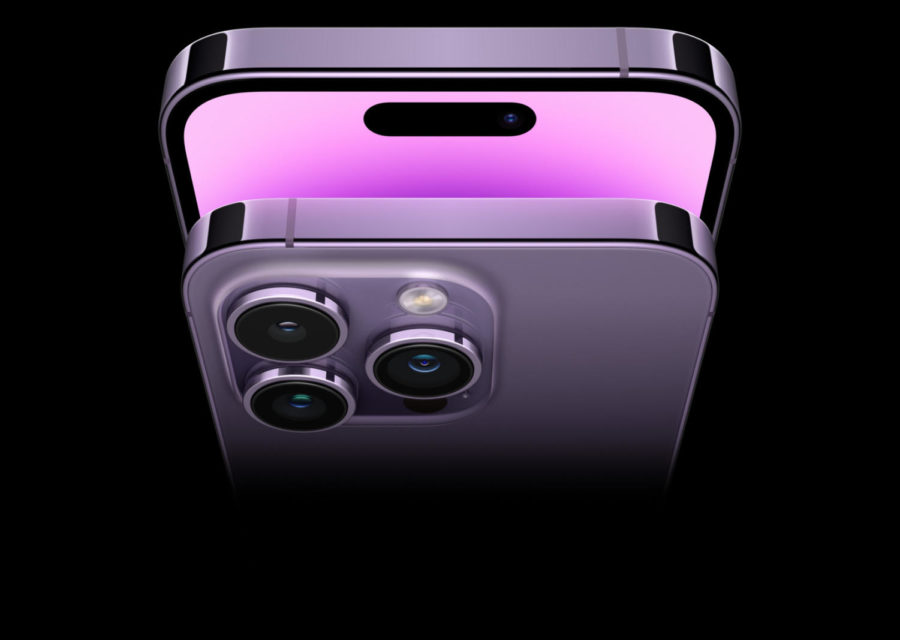iPhone 14: Worth the upgrade?
October 14, 2022
Apple has a new line of phones, but are they worth a purchase? It depends on which one you get.
On Sept. 7, an event was hosted by Apple revealing the iPhone 14, 14 Plus, 14 Pro, 14 Pro Max, AirPods Pro 2, and multiple new watches. Specifications were announced for the new devices (battery life, camera upgrades, screen brightness, etc.) as well as new software features, including many aspects of iOS 16.
A majority of the iPhone-related features revealed are only present on the Pro/Pro Max models of the phone. One of the staple features of these is the Dynamic Island, a replacement for the ‘notch’ cutting into the screen in the form of a pill-shaped cutout. Along with holding the camera, the Dynamic Island changes size and shape depending on activities and notifications on the phone. For example, the bar expands to indicate when music is being played and, when tapped, will display information and controls related to the music playing. Running the phone is the new A16 Bionic chip, offering a slight performance improvement to the 13’s A15 Bionic. Some other key features include a new 48-megapixel camera, a 65 percent larger sensor than the 13 Pro, as well as a new ‘Super Retina XDR’ screen, “twice as bright as before and the highest peak brightness of any smartphone,” Apple claims.
Though every phone in the 14 line looks similar to their iPhone 13 variants, the base iPhone 14’s hardware and specifications are in many ways nearly identical. The chip on the 14 is the A15 Bionic, the same chip as on the 13. Design-wise, the 14 is just about the same as the 13, with a glass body, a notch on the top of the screen, and an aluminum frame. The main rear-facing cameras in the 14 remain at 12 megapixels, now with a slightly larger sensor.
While many new features are exclusive to the Pro models, there are some available on all iPhone 14s. Crash detection has been added, measuring factors such as air pressure, GPS location, and accelerometer information to prompt a call to emergency services, who are contacted if the phone does not receive a response. The front-facing cameras now have autofocus, something only seen on rear-facing cameras in the past. Cameras also have a new ‘action’ mode, stabilizing the camera during shaky shots at the cost of some screen cropping.










